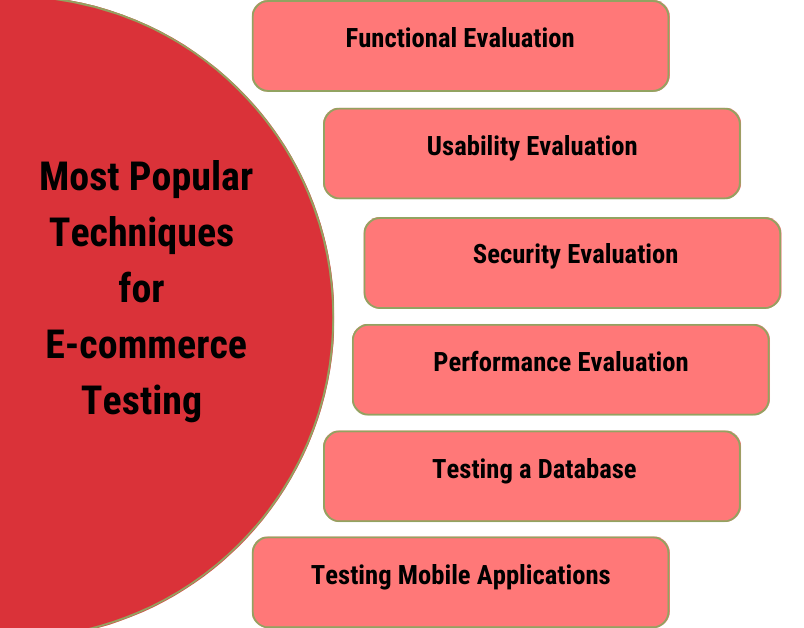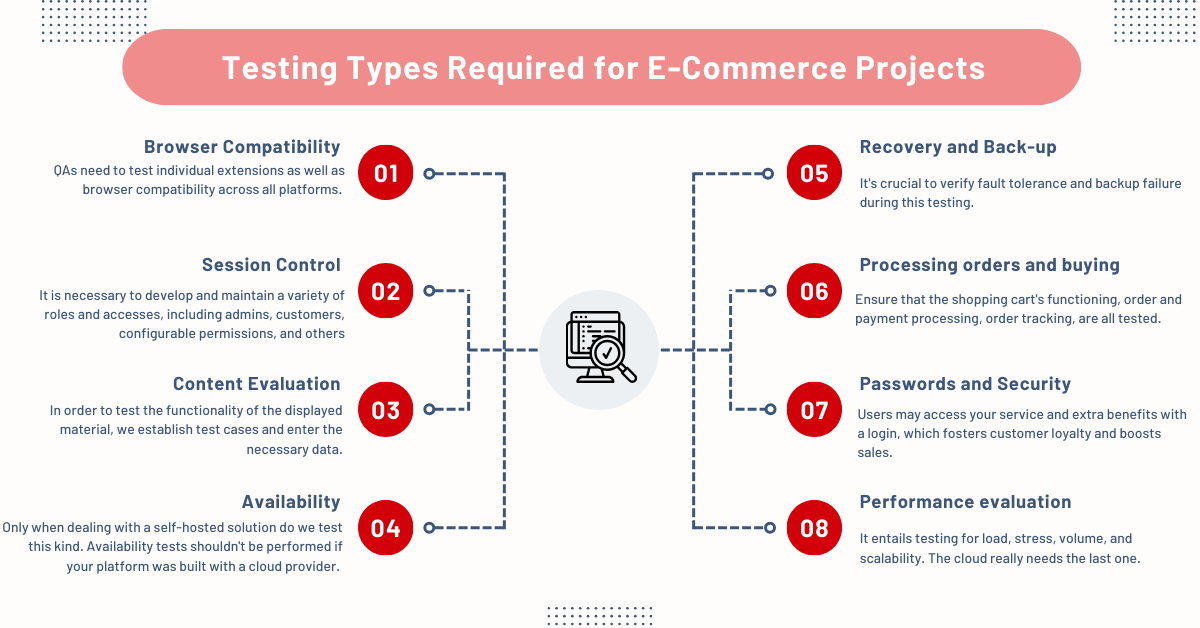In the past ten years, there has been a dramatic change in the entire ecology of shopping. Nowadays, people are more content to browse through a variety of things online and make purchases at their comfort and convenience, as opposed to the past when people preferred to shop for all of their needs at brick-and-mortar establishments. eCommerce businesses have greatly profited from the transformation in terms of their capacity to diversify their clientele abroad. However, it has also put them in a difficult situation where they must keep up with the population’s ongoing growth and evolution as well as their shifting needs and demands.
This is where a robust ecommerce testing strategy weighs in to check the feasibility of the website taking in the ever-increasing customer demands and keeping up with the competition.
What is eCommerce Testing? Why is it Crucial?
eCommerce testing is the process of assessing the usability and soundness of different eCommerce website components, including design, specifications, functionalities, pages, and features, to ensure they won’t in any way negatively impact the site’s performance.
Proper testing of the eCommerce websites has the potential to significantly increase conversions while also improving the user experience on the site when done well and consistently.
eCommerce testing aids in verifying a page element’s sanitation. It enables us to more quickly address problems by revealing which website element or procedure has an impact on a user’s onsite experience. You may create efficient plans for your website, engage more online shoppers and lengthen their stay by highlighting the sections of your eCommerce site that need improvement.
Making significant changes to your website can frequently lead to major tactical adjustments or even big financial losses. But carefully implementing the eCommerce strategy can aid in lowering the probability of these unanticipated losses.
Moreover, it might be challenging to map the wants and preferences of the online shoppers and then optimize your site accordingly. But testing is one of the best and quickest ways to find out what your visitors appreciate, thus increasing site conversions and customer satisfaction.
Challenges in eCommerce Testing Strategy
Testing is a critical phase in any software development or integration process. In a world where user experience and data security are paramount, thorough and well-planned testing is the key to success. By carefully selecting scenarios, embracing automation wisely, prioritizing security, ensuring accessibility, and testing for reliability and scalability, you pave the way for a resilient and high-performing e-commerce web platform.
Key Considerations for Effective eCommerce Testing
Scenario Selection
When it comes to automated integration testing, one scenario type that should be on your radar is testing the entire user journey from the homepage to the payment gateway. This comprehensive approach ensures that all functional areas are covered, leaving no stone unturned.
Thoughtful Automation
While automation can be a game-changer, it’s important not to fall into the trap of automating everything blindly. Carefully choose the technologies and automation principles that align with your specific needs. A strategic approach to automation prevents chaos down the road.
Security First
Protecting customer data and maintaining its integrity is non-negotiable. Your testing process should adhere to robust security policies encompassing confidentiality, integrity, authenticity, encryption, and availability. These rules create a fortified shield around sensitive information.
Global Accessibility
In today’s interconnected world, compliance with accessibility standards is paramount. Ensuring that your website can be used by individuals from various nations and regions not only broadens your user base but also reflects inclusivity. Pay attention to cultural nuances and ensure your content is relevant and appropriate.
Reliability vs. Scalability
It’s crucial to understand the difference between reliability and scalability testing. Scalability testing assesses your website’s ability to grow and handle increased user requests, whether on-premises or in the cloud. Reliability testing, on the other hand, focuses on how well your website performs under heavy traffic conditions on various devices. Both are essential for a robust web presence.
eCommerce Testing Types

Even if each of these procedures has its own set of rules and restrictions, running several tests at once utilizing multiple testing methodologies might cause chaos and interfere with test results. As a result, it is typically advised to conduct one test at a time or to make use of a competent testing tool that enables you to run many tests simultaneously without having them overlap. As a result, you must prioritize the tests you want to run depending on how they will affect your brand’s overall conversion rate. With the help of theories like agile testing, which are used by teams conducting software testing, you may establish the right balance.

Choosing the Elements for eCommerce Testing
We’ve provided a list of the key components you should examine while evaluating your e-commerce platform because they are all important for functionality and might cause problems if not tested thoroughly.
General Testing
You should first concentrate on testing all of the pages on your eCommerce site that users will actively interact with. You should examine the homepage’s interaction quality, the design and navigation’s usability, and any potential login process problems on the home and login pages.
Search Functionality Testing
This function is frequently used for e-commerce because it is still simpler to search for a product in a search bar even when you structure your products correctly and make them simple to follow. QAs should create distinct search categories, such as product name/brand name.
Payment Gateway Testing
Since payments are the last step in the user journey—the route customers travel to achieve their goal on your website—you cannot skimp on this component. You’ll probably lose the consumer if the payment is declined. To prevent this, make sure experts thoroughly examine how various payment methods operate from start to finish, carry out security testing, examine the return page after the transaction, and, if necessary, authenticate payments.
Shopping Cart
The shopping cart also needs to go through a rigorous testing process, looking at how many things can be added and shown in the cart window, how to remove items from the cart, how to calculate shipping charges, and how to apply coupons.
Given that your company has an online presence, you should be aware that visitors to your ecommerce website may be of different ages, ethnic origins, demographics and buying capacities. Because of this, identifying cultural variations and taking them into account while conducting tests can be a wonderful first step towards scalability. At each stage, security and dependability should also be improved as part of your ecommerce testing strategy.
With the drive towards higher digitization and evolving technologies, your ecommerce website’s reliable and secure presence will greatly benefit your company’s reputation and financial health.




